Hyundai Tucson VS Hyundai IONIQ 5 – Specs, Efficiency & Price Comparison
Which model is the better choice – the Hyundai Tucson or the Hyundai IONIQ 5? We compare performance (252 HP vs 609 HP), boot capacity (620 L vs 520 L), efficiency (1 L vs 15.60 kWh), and of course, the price (30600 £ vs 37600 £).
Find out now which car fits your needs better!
The Hyundai Tucson (SUV) is powered by a Diesel MHEV, Petrol MHEV, Petrol, Full Hybrid or Plugin Hybrid engine and comes with a Automatic or Manuel transmission. In comparison, the Hyundai IONIQ 5 (SUV) features a Electric engine and a Automatic gearbox.
When it comes to boot capacity, the Hyundai Tucson offers 620 L, while the Hyundai IONIQ 5 provides 520 L – depending on what matters most to you. If you’re looking for more power, you’ll need to decide whether the 252 HP of the Hyundai Tucson or the 609 HP of the Hyundai IONIQ 5 suits your needs better.
There are also differences in efficiency: 1 L vs 15.60 kWh. In terms of price, the Hyundai Tucson starts at 30600 £, while the Hyundai IONIQ 5 is available from 37600 £.
Compare all the key specs now and find out which model fits your lifestyle best!
In the latest showdown between the Hyundai Tucson and the IONIQ 5, consumers are presented with two distinct visions of modern driving. The Tucson impresses with its traditional SUV versatility and robust features, making it a practical choice for families. In contrast, the IONIQ 5 dazzles with its cutting-edge design and electric efficiency, appealing to those looking to embrace the future of sustainable mobility.
Hyundai Tucson
The Hyundai Tucson is a standout choice in the compact SUV segment, offering a perfect blend of style, comfort, and practicality. Its modern design is complemented by a spacious interior that provides ample room for passengers and luggage alike. With advanced technology and safety features, the Tucson ensures a smooth and enjoyable driving experience.
details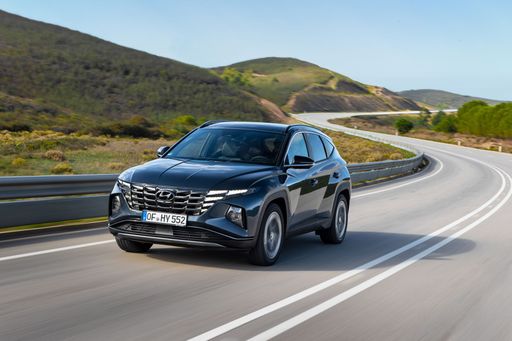 @ hyundai.news
@ hyundai.news
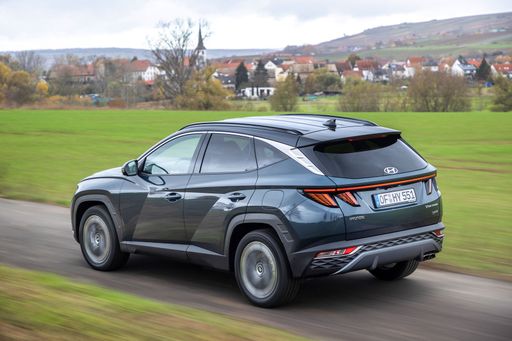 @ hyundai.news
@ hyundai.news
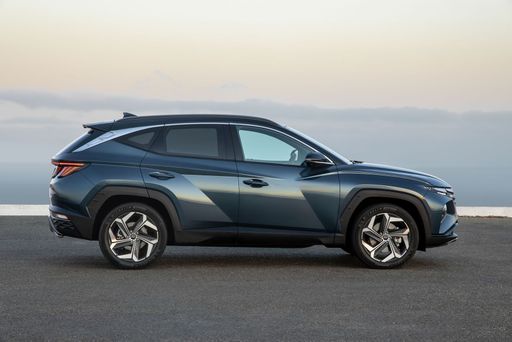 @ hyundai.news
@ hyundai.news
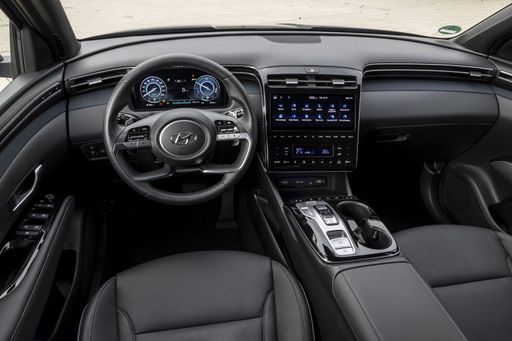 @ hyundai.news
@ hyundai.news
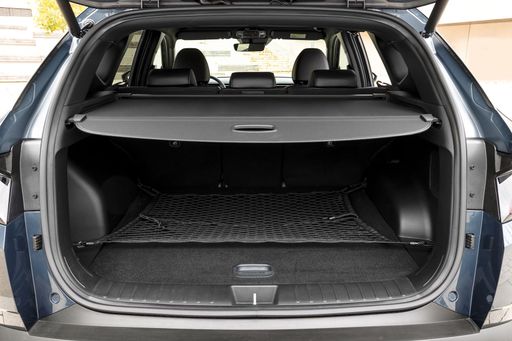 @ hyundai.news
@ hyundai.news
Hyundai IONIQ 5
The Hyundai IONIQ 5 showcases a bold and futuristic design that captures attention with its striking facade and sharp lines. This electric vehicle offers an impressive blend of performance and efficiency, making it a compelling choice for environmentally conscious drivers. Inside, the spacious and tech-forward interior provides a comfortable and engaging driving experience for both driver and passengers.
details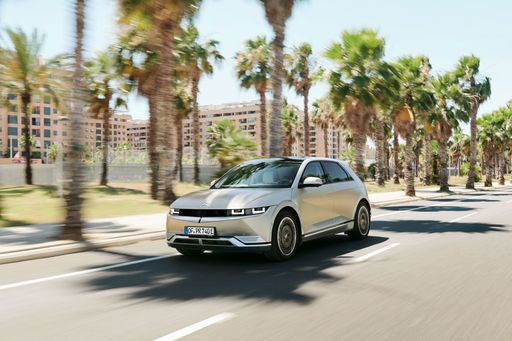 @ hyundai.news
@ hyundai.news
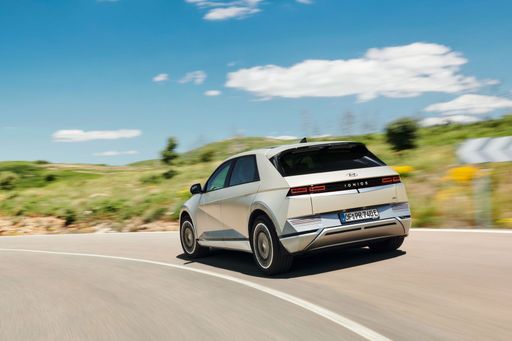 @ hyundai.news
@ hyundai.news
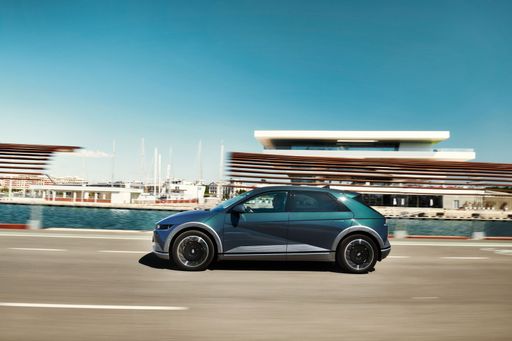 @ hyundai.news
@ hyundai.news
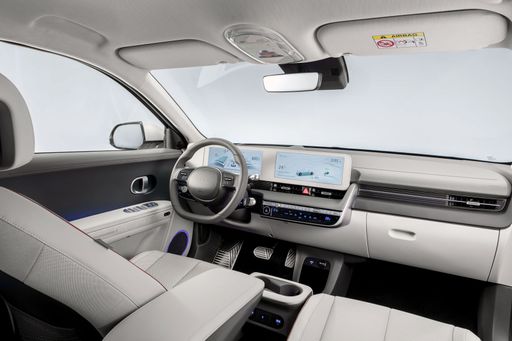 @ hyundai.news
@ hyundai.news
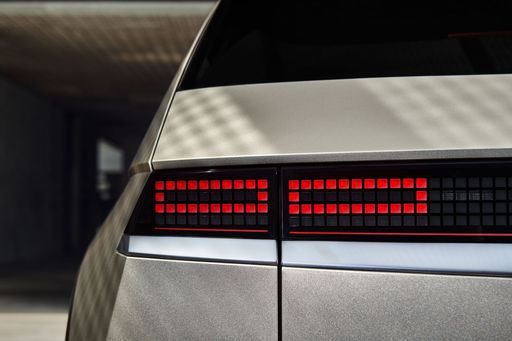 @ hyundai.news
@ hyundai.news
Hyundai Tucson vs. Hyundai IONIQ 5: Innovation Meets Versatility
In the competitive automotive landscape of 2024, Hyundai has positioned itself as a frontrunner with two impressive vehicles: the Tucson and the IONIQ 5. While both models sit under the SUV umbrella, they target different segments of the market and cater to distinct customer preferences. Let’s dive into a detailed comparison of their technical aspects and innovations.
Powertrain and Performance
The Hyundai Tucson offers a versatile range of powertrains, including Diesel MHEV, Petrol MHEV, Petrol, Full Hybrid, and Plug-in Hybrid options. With power outputs ranging from 136 HP to an impressive 252 HP, Tucson provides an array of driving experiences. The acceleration figures are equally compelling, with the Tucson's most robust variant achieving 0-100 km/h in just 7.9 seconds.
On the other hand, the IONIQ 5 solely focuses on electric powertrains, boasting a maximum output of 609 HP in its performance variant. This translates to an exhilarating 0-100 km/h time of just 3.5 seconds, marking it as one of the most rapid electric SUVs available. The IONIQ 5 offers an electric range up to 570 km, significantly outpacing the Tucson's electric variants, which max out around 70 km.
Efficiency and Sustainability
The Tucson exhibits commendable fuel efficiency across its petrol and hybrid options, with consumption figures as low as 5.1 L/100 km for hybrid models. However, it falls short when compared to the sustainability of the IONIQ 5, which boasts a consumption rate of only 15.6 kWh/100 km, catering to the eco-conscious driver. The IONIQ 5 also leads in CO2 emissions, achieving a class A efficiency with zero emissions at the tailpipe.
Dimensions and Comfort
When it comes to dimensions, the Tucson has a length of 4510 mm and a height of 1650 mm, providing ample space for passengers and cargo. With a trunk capacity ranging from 546 to 620 liters, the Tucson is practical for families and everyday use. Its interior is tailored for comfort, with seating for five and a focus on quality materials.
Conversely, the IONIQ 5 stretches a bit longer at 4655 mm with a lower height of approximately 1605 mm, which helps in achieving better aerodynamics. While it offers a trunk capacity of 520 liters, it emphasizes a modern and spacious interior designed with sustainability in mind, utilizing eco-friendly materials throughout.
Technology and Features
Both models come equipped with state-of-the-art technology. The Tucson integrates advanced driver assistance systems such as adaptive cruise control, lane-keeping assist, and smart parking assistance. Its infotainment system is user-friendly, offering seamless smartphone integration and a variety of connectivity options.
The IONIQ 5 takes a bold leap in technology by incorporating a massive touchscreen interface that houses all infotainment and vehicle settings. It also features Hyundai's Vehicle-to-Load (V2L) technology, allowing you to use the car's battery to power external devices, which is a significant innovation for electric vehicles. Moreover, the IONIQ 5 supports ultra-fast charging, achieving up to 80% charge in around 18 minutes under optimal conditions.
Safety Ratings and Awards
Both the Tucson and IONIQ 5 are designed with safety in mind. The Tucson performs admirably in crash tests and has earned various safety awards. It comes equipped with an extensive suite of safety features ensuring driver and passenger protection.
The IONIQ 5, representing a new generation of electric vehicles, has similarly excelled in safety ratings. Its platform is constructed with high-strength steel, enhancing safety in the event of a collision while also providing a stable base for its battery.
Conclusion: Choosing Your Hyundai
The choice between the Hyundai Tucson and IONIQ 5 ultimately boils down to consumer needs. If versatility, a range of engine choices, and traditional SUV attributes are paramount, the Tucson shines. Conversely, for those prioritizing cutting-edge technology, sustainability, and electric performance, the IONIQ 5 stands out as a remarkable option. Both vehicles exemplify Hyundai's commitment to innovation and excellence, catering to a broad spectrum of drivers in today’s automotive market.

|

|
|
|
|
Costs and Consumption |
|
|---|---|
|
Price
30600 - 46300 £
|
Price
37600 - 64200 £
|
|
Consumption L/100km
1 - 6.9 L
|
Consumption L/100km
-
|
|
Consumption kWh/100km
-
|
Consumption kWh/100km
15.6 - 21.2 kWh
|
|
Electric Range
64 - 70 km
|
Electric Range
440 - 570 km
|
|
Battery Capacity
-
|
Battery Capacity
63 - 84 kWh
|
|
co2
22 - 156 g/km
|
co2
0 g/km
|
|
Fuel tank capacity
42 - 54 L
|
Fuel tank capacity
-
|
Dimensions and Body |
|
|---|---|
|
Body Type
SUV
|
Body Type
SUV
|
|
Seats
5
|
Seats
5
|
|
Doors
5
|
Doors
5
|
|
Curb weight
1520 - 1889 kg
|
Curb weight
1955 - 2275 kg
|
|
Trunk capacity
546 - 620 L
|
Trunk capacity
480 - 520 L
|
|
Length
4510 - 4520 mm
|
Length
4655 - 4715 mm
|
|
Width
1865 mm
|
Width
1890 - 1940 mm
|
|
Height
1650 mm
|
Height
1585 - 1605 mm
|
|
Payload
525 - 545 kg
|
Payload
385 - 530 kg
|
Engine and Performance |
|
|---|---|
|
Engine Type
Diesel MHEV, Petrol MHEV, Petrol, Full Hybrid, Plugin Hybrid
|
Engine Type
Electric
|
|
Transmission
Automatic, Manuel
|
Transmission
Automatic
|
|
Transmission Detail
Automat. Schaltgetriebe (Doppelkupplung), Schaltgetriebe, Automatikgetriebe
|
Transmission Detail
-
|
|
Drive Type
Front-Wheel Drive, All-Wheel Drive
|
Drive Type
Rear-Wheel Drive, All-Wheel Drive
|
|
Power HP
136 - 252 HP
|
Power HP
170 - 609 HP
|
|
Acceleration 0-100km/h
7.9 - 11.6 s
|
Acceleration 0-100km/h
3.5 - 8.5 s
|
|
Max Speed
180 - 194 km/h
|
Max Speed
185 - 260 km/h
|
|
Torque
265 - 367 Nm
|
Torque
350 - 740 Nm
|
|
Number of Cylinders
4
|
Number of Cylinders
-
|
|
Power kW
100 - 185 kW
|
Power kW
125 - 448 kW
|
|
Engine capacity
1598 cm3
|
Engine capacity
-
|
General |
|
|---|---|
|
Model Year
2024
|
Model Year
2024
|
|
CO2 Efficiency Class
E, F, D, B
|
CO2 Efficiency Class
A
|
|
Brand
Hyundai
|
Brand
Hyundai
|
Hyundai Tucson
Introducing the Hyundai Tucson: An SUV with Innovation at its Core
The Hyundai Tucson has long been synonymous with reliability, comfort, and exceptional value. With its 2024 model, this popular SUV has taken a bold leap forward by incorporating cutting-edge technology, efficient powertrains, and striking design. Let's delve into the technical details and innovations that make the Hyundai Tucson a standout in the crowded SUV market.
Dynamic Engine Options: Power Meets Efficiency
The Tucson offers a range of powertrains, ensuring there is a model perfect for every driver. Whether you're looking for the fuel efficiency of a mild-hybrid diesel or the power of a plug-in hybrid, the Tucson has you covered. The engine options include:
- Diesel Mild-Hybrid: Combining efficiency with robust performance.
- Benzin Mild-Hybrid: Offering a balance between economy and power.
- Voll-Hybrid: Delivering impressive power while maintaining low fuel consumption.
- Plug-in Hybrid: Offering electric-only driving capabilities with a range of up to 65 km.
These engines are paired with either a manual or automatic transmission, catering to different driving preferences.
Performance and Handling: Experience the Drive
The performance of the Hyundai Tucson is designed to impress, with power outputs ranging from 136 to 252 PS. The Tucson accelerates from 0-100 km/h in as little as 8.1 seconds, managed by precise transmission options such as the dual-clutch and traditional automatic gearboxes. With both front-wheel and all-wheel drive options, the Tucson assures stability and control in varied driving conditions.
Interior and Technology: Comfort Meets Cutting-Edge Innovation
The Tucson's interior is a haven of comfort and technology. With a length ranging up to 4520 mm and a spacious boot capacity of 620 litres, practicality is at the forefront. The intuitive infotainment system includes advanced connectivity features, while driver-assist technologies enhance safety and convenience on every journey.
The choice of luxurious trims and finishes, combined with ergonomic design, ensures that every drive is a pleasure, whether you're on a daily commute or an extended adventure.
Environmental Considerations: Efficiency and Sustainability
Hyundai has made notable strides in ensuring that the Tucson is as environmentally friendly as possible. Models with CO2 emissions as low as 27 g/km place it amongst the leaders in its class for eco-friendly driving. The array of hybrid options further complements Hyundai's commitment to sustainability, providing consumers with green alternatives without compromising performance.
Conclusion: The Hyundai Tucson Is More Than Just an SUV
The 2024 Hyundai Tucson is more than just a means of transport—it's a statement of modernity. It reflects Hyundai's dedication to innovation, efficiency, and comfort, all wrapped up in a stylish and versatile SUV. Whether you're tech-savvy, eco-conscious, or performance-oriented, the Tucson proves to be an ideal choice for forward-thinking drivers.
Hyundai IONIQ 5
Introducing the Hyundai IONIQ 5: A New Era in Electric Mobility
The Hyundai IONIQ 5 is a revolutionary addition to the electric car market, blending futurist aesthetics with ingenious technological features. As part of Hyundai's all-electric lineup, the IONIQ 5 exudes a refreshing approach to sustainable motoring, offering a blend of power, efficiency, and innovation that is set to transform everyday driving.
A Futuristic Design
The IONIQ 5 sets new standards in automotive design with its distinctive silhouette. Its clamshell bonnet and pixelated LED light design form a unique visual signature, evoking a sense of modernity and advancement. Built on Hyundai's Electric-Global Modular Platform (E-GMP), this SUV heralds a new direction for electric vehicles, serving both form and function with a flat floor that maximises interior space.
Performance and Efficiency
The Hyundai IONIQ 5 offers a variety of powertrains to cater to different driving preferences. Depending on the model, power output ranges from 170 PS to a staggering 609 PS, with corresponding torque between 350 Nm and 740 Nm. These configurations enable a brisk acceleration capability, reaching 0-100 km/h in as little as 3.5 seconds.
The car’s battery options of 63 kWh and 84 kWh provide flexibility between range and performance. The efficiency of the IONIQ 5 is admirable, with a consumption ranging from 15.6 to 21.2 kWh/100km, ensuring the capability to travel up to 570 km on a single charge.
Innovative Technology
The IONIQ 5 isn't just about efficient propulsion; it's laden with cutting-edge technology that enhances the driving experience. The vehicle includes an ultra-fast charging capability, able to reclaim 80% of the battery life within just 18 minutes. This is complemented by Vehicle-to-Load (V2L) technology, which turns the IONIQ 5 into a power source to charge devices or even other electric vehicles.
Comfort and Convenience
Inside, the IONIQ 5 continues to impress with a spacious and flexible cabin that maximises comfort and utility. Its minimalist dashboard, dual 12.3-inch screens for infotainment and digital instrument cluster, and extensive use of eco-friendly materials contribute to a serene driving environment.
Safety Meets Innovation
Hyundai has equipped the IONIQ 5 with an array of advanced driver assistance systems. These include features such as Smart Cruise Control, Highway Driving Assist, and Remote Smart Parking Assist, ensuring that safety is paramount without sacrificing convenience.
The Future of Sustainable Driving
With a CO2 efficiency class of A and zero emissions, the Hyundai IONIQ 5 signifies a shift towards more sustainable driving practices. Its blend of technology, performance, and aesthetic appeal positions it as a pivotal player in the electric vehicle market, paving the way for a cleaner, greener future in automotive design.
The prices and data displayed are estimates based on German list prices and may vary by country. This information is not legally binding.
